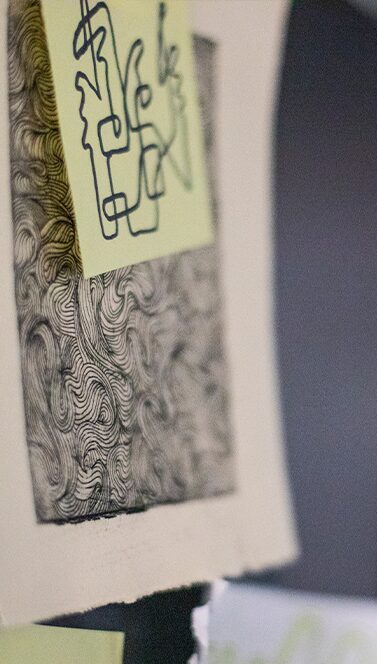Resume Rundown: Tips & Tricks
- 11.21.23
- 3 Min Read
Your portfolio is polished and applications are ready to go out. Ready for the bitter truth? Most places will only have time to interview the people with the most impressive resumes. Our interview process attempts to combat this unfortunate reality, but most places won’t be willing to give you a similar shot.
Don’t let an application faux pas put your chances of landing an awesome internship or job in jeopardy. Follow these tips from former L&S intern Roberta Forman to put yourself at the top of the list when it comes to interview time.
1. Proof, Then Proof Again
Nothing makes a worse first impression than typos, old information or general goofs. Triple check every part of your resume for errors, then enlist a friend to give it a fresh set of eyes.
2. Write in Third-Person
Resumes should be an objective display of your experience, accomplishments and skills. So when listing all of your information, be sure to leave out any first-person language and only speak in third-person.
3. Show Off — A Little
When it comes to touting your work experience, don’t just list your duties — let your prospective employer know about the accomplishments you made in your role. Did you streamline a process? Increase engagement on a social platform? Show your stuff. A small callout section featuring any awards, honors and certifications is also a good idea.
4. Express Your Skills
While skill-level bars can give you an interesting infographic visual for your resume, think twice before adding one to yours. Do you really want your prospective employer to know that you’re only 5/10 stars proficient in HubSpot even if you’re 9/10 stars proficient in WordPress? Instead, find different ways to display the skills that you do have. Consider integrating your skills within your work experience section, or in this example, have a list of programs that you have worked with before and leave it at that.
5. One Page, Please
Keeping your resume on one page simplifies the process for everyone involved. If you need to save space, skip the references. If an employer wants them, they’ll usually follow up with you.
6. Prep Your Profile
Your prospective employers WILL go check out your LinkedIn/Facebook/similar social media accounts before bringing you in for an interview. Use this information as you will.
7. Give Us The Highlights
Unless you really feel flipping burgers or whatever odd job you had in high school has made an impact on the way you act and work today, the person reading your resume probably doesn’t want to hear about it. We don’t need an exhaustive history of every job you’ve had — only note your most important and relevant experience.
A FEW FORMATTING TIPS
The first step to a good resume is great content and experience. The second step is making all of that info visually appealing. Good news: you don’t have to be a designer to have an A+ aesthetic game. Here are a few tips to help.
1. Fonts Matter
Times New Roman is boring. Branch out – but not too far. A couple of good rules to follow: Stick to 1-3 fonts that work well at multiple sizes, and give your resume some hierarchy with bold type and bigger titles. If your existing fonts aren’t what you’re looking for, check out Google Fonts for something new (and free).
Here’s a helpful link for any applicants considering using Comic Sans or Papyrus.
2. Use Color (and Restraint)
Making your titles or headlines blue: not a problem. Making the entire background of your resume blue: problem. Use color sparingly and strategically as an added element of visual interest. Stick to 1 or 2 colors to avoid being too overwhelming. And don’t assume your colors have to be bright, bold and crazy – soft, subtle colors can be just as effective.
3. Use Columns
Columns help you maximize the space on the page. Try multiple layouts by making columns different widths or moving your header (side vs. top). Using columns makes the information more digestible than a full page line after line.
4. White Space Is Your Friend
White space (a.k.a. negative space a.k.a. the parts of the paper where your words aren’t) is one of the most important elements you can use on your resume. Leave space between sections, columns and rows. Don’t try to squish so much information on the page that it becomes too overwhelming to read. Less clutter — more white space.
5. Send a PDF — Not a Word Document
So you downloaded a new font, put your info perfectly into columns and made brilliant use of your white space. Then you sent out your resume as a Word document — and, in turn, left all your hard work to the mercy of the recipient’s computer. If they haven’t installed the font you used, Word will choose a default one that could have different spacing and BOOM — your beautiful resume looks like a jumbled mess. Save yourself the trouble and save your resume as a PDF.
6. Save Your Face for Later
Age, race and gender fall under the category of questions potential employers can’t ask in an interview, and photos give that away. Your resume should only include factors that are relevant to how well you can do the job you’re applying for. Unless you’re applying to be L&S’s Next Top Model, leave your photo off and let your skills do the talking.






